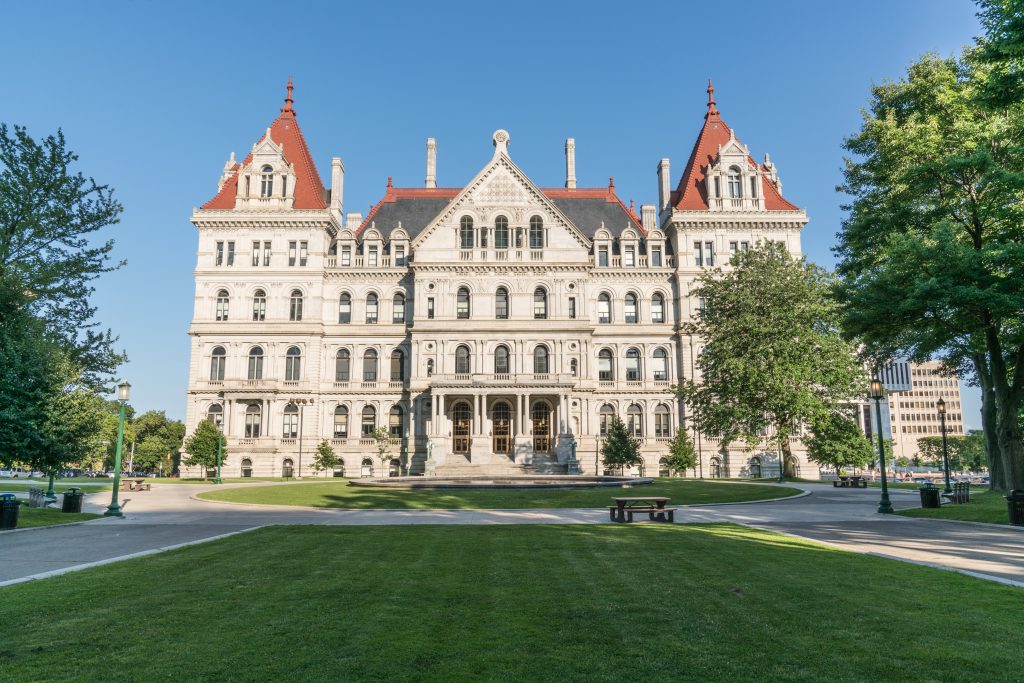Shortly after the bipartisan Independent Redistricting Commission approved a new set of congressional district lines for the 2024 election, the New York State Legislature voted to reject them. Democratic lawmakers, spurred by Gov. Kathy Hochul, wielded their supermajorities in both chambers to draw their own maps, which were signed into law by Hochul later that same day and will be in place through 2030.
The new map is expected to give Democratic candidates a slight advantage in two districts, adding more Democratic territory to the Long Island seat recently won by Democrat Tom Suozzi and the central New York seat, encompassing Syracuse and Utica, currently held by Republican Rep. Brandon Williams. The 19th Congressional District, which includes Binghamton and is represented by Republican Rep. Marc Molinaro, will also be slightly more competitive in 2024.
“I’ve won here, fought for these communities and affectionately call this district the place where upstate meets downstate,” Molinaro wrote in an X statement about the newly drawn lines. “While the New York Times reports my opponent D.C. lawyer Josh Riley considered abandoning this district again because [New York] Republicans have consistently won here, I’m committed to staying in the fight for every person in NY-19, regardless of political affiliation.”
Riley, who is running again after a narrow loss against Molinaro in 2022, mentioned Molinaro’s own district switch after losing an Aug. 2022 special election. He wrote that he was born and raised in the district and that his family had lived locally for a century.
The legislation enacting the changes was approved by both State Sen. Lea Webb and Assemblywoman Donna Lupardo, Greater Binghamton’s representatives in Albany. It was passed ahead of the legislature’s typical three-day waiting period after the governor used a “message of necessity,” waiving normal procedure.
The road to a House majority runs through New York. Hakeem Jeffries ‘92, the chamber’s minority leader, is positioned to ascend to the speakership should Democrats win a governing majority in 2024.
“This map reunites several communities of interest, reduces the number of counties, towns and villages that are split and promotes compact congressional districts,” Jeffries wrote in a statement following the legislature’s vote. “For these reasons, New Yorkers from every walk of life, race, region, religion, ethnicity, socioeconomic status and ZIP code can now more fairly determine who should represent them in Congress.”
Though Republicans largely accepted the new map, some in the legislature criticized the process, accusing Democrats of working to systematically bypass the independent commission, which was created in 2014 after voters passed a constitutional amendment. Of the body’s 10 members, the first eight are selected by the State Legislature’s majority and minority leaders, and they then choose the remaining two.
The State Legislature’s initial 2022 map was struck down by a judge for extreme gerrymandering — it was projected to award Republicans four of 26 congressional districts. Republican voters then sued in Steuben County and prevailed in a case that went to the Court of Appeals, New York’s highest court — who directed a special master to draw district lines that ultimately led to Republicans winning 11 seats, retaking the House majority.
Democratic-aligned voters then filed a lawsuit, which reached the Court of Appeals following Hochul’s appointment of a new chief judge. The newly-composed court ruled in Democrats’ favor, ruling that the redistricting process must restart, paving the way for the new map.
The new districts’ passage indicates the end of a years-long political drama in the state — Ed Cox, New York’s GOP chairman, indicated the party would not pursue further litigation as the legislature’s map preserves much of the commission’s work.
“These changes keep intact the regional identity of my district and allow me to keep fighting for the families, farmers and small businesses that call upstate New York home,” Molinaro wrote in a statement following the commission’s initial submission.



